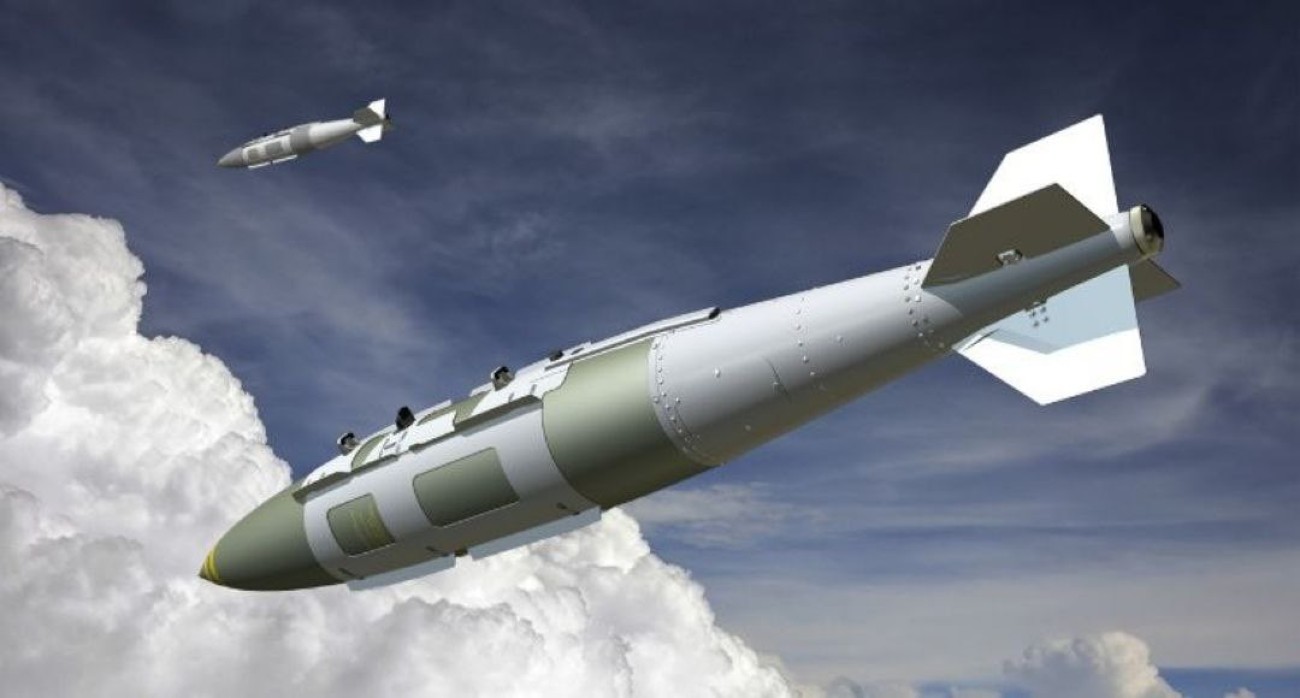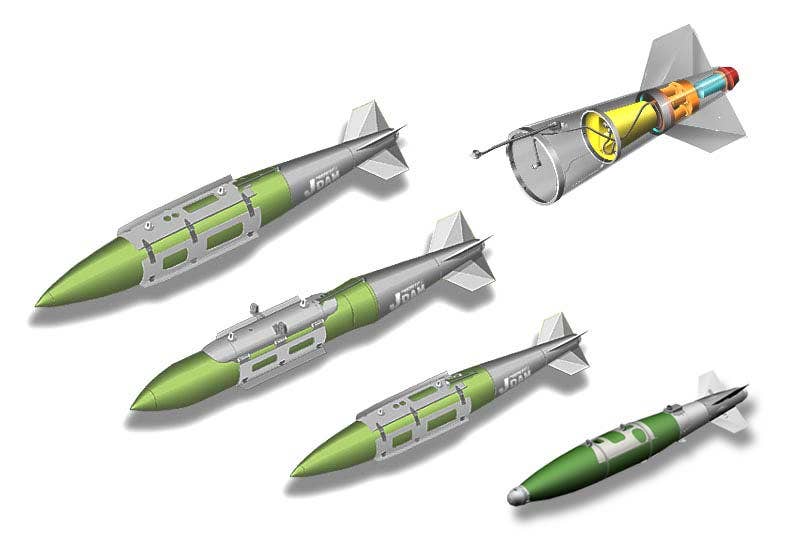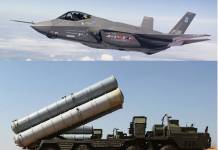An image has surfaced online of what seems to be a FAB-500M-62 bomb with a mysterious wing kit attached to it, reportedly loaded onto a Russian Su-34 Fullback combat jet.
The image first appeared on the pro-Russian Fighterbomber channel on Telegram on January 4. Not many details are available at the time of writing this article about the munition or when and where exactly the picture was taken, except an accompanying post that references the war in Ukraine.
Based on the images, the wing kit appears to comprise two removable main wings and a pair of horizontal stabilizers fitted to an elongated metal assembly attached to the bomb.
The bomb appears to be the FAB-500M-62, a 1,100 (500 kilograms) pound-class general-purpose high-explosive bomb. The wing kit seems crudely built, suggestive of a design focused on rapid, low-cost production or a more localized unit-level field modification. It could also be experimental and probably photographed in its raw ‘proof of concept’ form.

Apart from that, a wire can be seen running between the rear of the wing kit and the pylon to which the bomb is attached. The wire could trigger the release of the wings in some manner.
Is The New Wing Kit A Guidance Kit For Dummy Bombs?
Netizens have compared the munition seen in the image with the US’ Joint Direct Attack Munition (JDAM) family of precision-guided bombs, which the Ukrainian armed forces could soon get their hands on, and for which range-extending wing kits are also available.
Meet Russia's newest aerial bomb: The 'JDAMski'. pic.twitter.com/YKaZhRxkc3
— Oryx (@oryxspioenkop) January 4, 2023
Standard JDAMs rely on a combination of the inertial navigation system (INS) and GPS guidance, coupled with an autopilot, to direct the bomb’s course via a set of steerable tail fins.
Depending on the altitude at which it is released, a 500-pound-class JDAM-Extended Range (JDAM-ER) with a wing kit can hit targets at up to around 64 kilometers of range.

That said, US military commentators caution against reading too much into the image, saying the modified FAB-500M-62 does not immediately appear to be guided in any way.
While the design of the rear stabilizers may suggest that they can move up and down, this by itself could not possibly course correct. That said, the main wings may have some flexibility of movement, but it is not clear if that is the case from the available image.
The Russian company GNPP Bazalt is known to have developed wing kits for various types of unguided bombs, including the FAB-500M-62, with and without associated guidance systems. These wing kits are called Modul Planirovaniya I Korrektsi (MPK), or “gliding and correction module,” in the Russian language.
According to a book by Russian military aviation expert Piotr Butowski, ‘Russia’s Air-launched Weapons: Russian-made Aircraft Ordnance Today,’ the simplest variant of the MPK is an unfolding wing with a span ranging from 64.5-200 centimeters, with considerable dihedral – the inclination of a wing from the horizontal especially upwards away from the fuselage – and a vertical fin in the forward portion of the weapon.
“The bomb is stabilized aerodynamically without any homing. The aim is to reach a range of 6-7 km (3.7-4.3 miles) when dropped from low altitude,” writes Butowski in his book.
He also notes that at least at the time of writing the book, Bazalt’s work had yet to yield “any real results” and that “the most serious problem with the MPK module is that in contrast with American aerial bombs, Russian GP [general purpose] bombs are welded monoliths.”
“So, it is impossible to remove the tail section and replace it with a guidance unit, as the Americans do with the Joint Direct Attack Munition (JDAM),” Butowski added.

Whether the wing kit in the image in question is related to the MPK development effort remains unknown.
The Wing Kit Could Offer Extended-Range To Russian Fighter Pilots
Assuming the bomb is unguided, the wing kit could enable the Russian aircraft to deploy the bombs from a standoff range at a relatively low cost. This will allow the Russian pilots to stay outside the areas covered by Ukrainian air defense systems.
Russian and Ukrainian air forces have lost several warplanes to surface-to-air missiles, including the shoulder-fired man-portable air defense systems (MANPADS), and considering the recent inflow of western-made air defense weaponry in Ukraine, an extended-range bomb might seem like a necessity for the Russian Aerospace Forces (VKS).

Operationally, this weapon may be most effective when released at high altitudes to offer the weapon as much glide range as possible. This could enable the Russian fighter pilots to launch the weapon dozens of kilometers away from their targets, offering them a certain amount of survivability that has not existed without precision standoff munitions so far, which according to several reports, have been depleting at an unsustainable rate.
The severe depletion of its inventory of precision-guided munitions has prompted the Russian military to rely heavily on unguided bombs. To deliver these, the Russian fighters have to fly low, making them vulnerable to the MANPADS, as significantly discussed in a previous EurAsian Times article.
That said, the strike accuracy of unguided bombs with wing kits will be poor, so such a weapon would most likely be used against area targets such as trench lines and other fortification networks and areas with large concentrations of enemy forces present.
- Contact the author at tanmaykadam700@gmail.com
- Follow EurAsian Times on Google News




